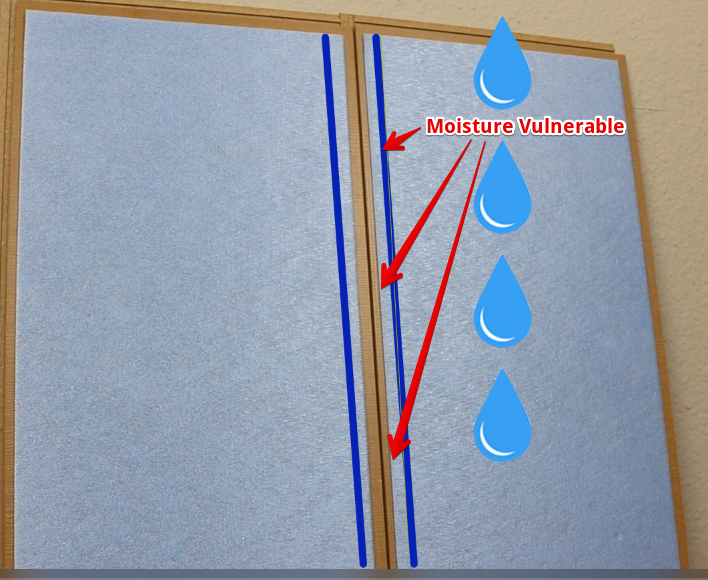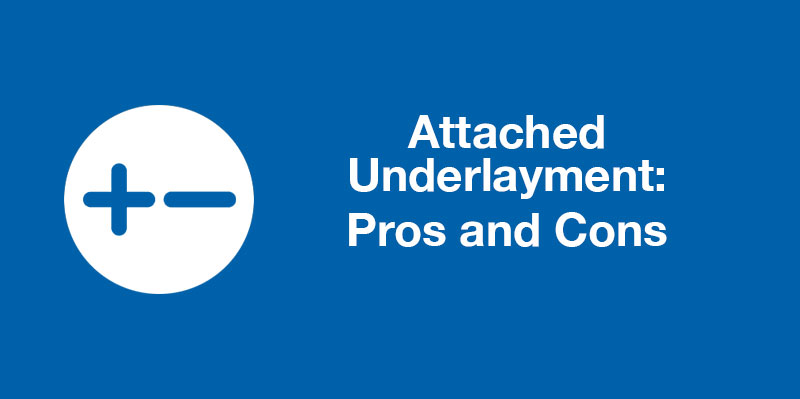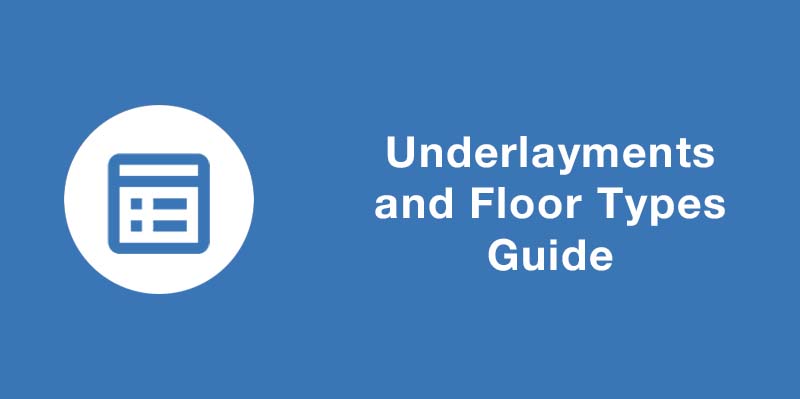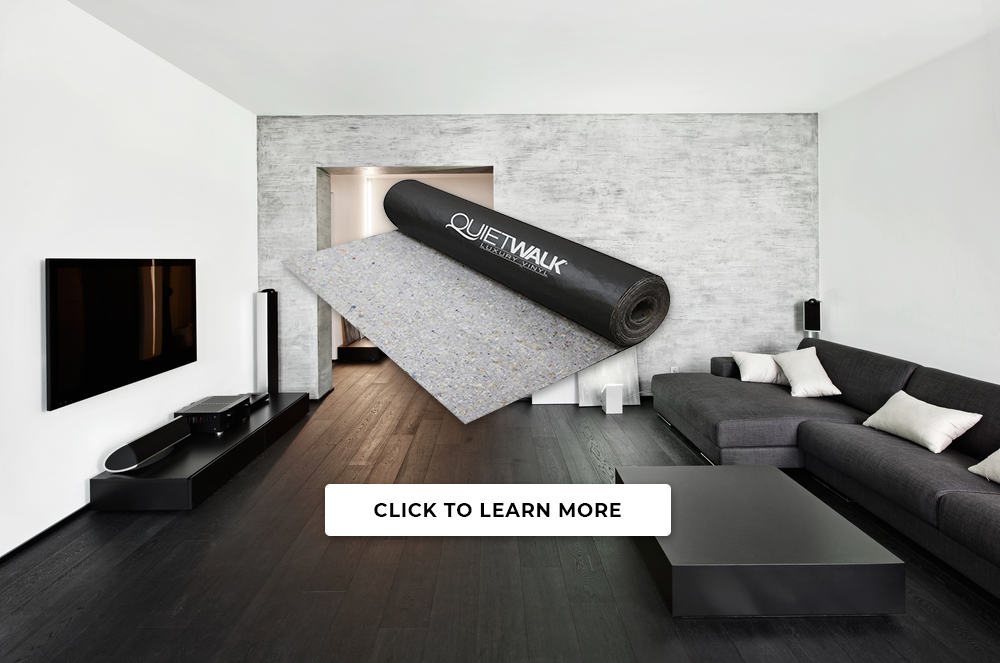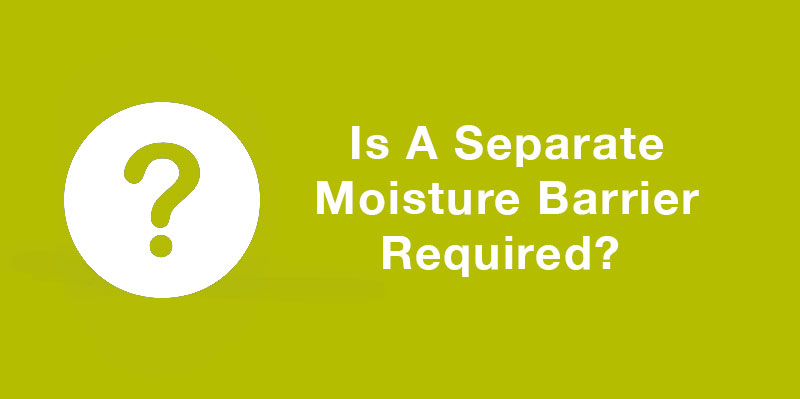So, you’ve officially had it up to here looking at your existing floors and finally have enough cash in the bank to do something about it. That’s exciting stuff, but you might want to pump the brakes for a moment. There’s a ton of information you need to know before you pull up a single board or immediately buy 2000 square feet of linoleum, and the appropriateness of underlayment is one of them. Don’t worry, we’ll cover everything you need to know in this underlayments and floor types guide.
Is it an optional add-on or something your floor/subfloor type positively needs? We’re here to help you answer just that, breaking down underlayments and floor types in this comprehensive underlayment guide. Read along to find out precisely what flooring necessitates the extra expense and what will keep you in the clear.
Hardwood Flooring
When it’s finally come time to replace your old floors, hardwood presents a super attractive option. However, while those pretty, shiny new wood floors may look beautiful, their logistics don’t paint such a pretty picture. After all, they require significant maintenance if you want them to last long and look good while doing it. Underlayment is a helpful step for many in this endeavor, but do you need it?
Contrary to what some might say, the answer is ‘no.’ Solid wood flooring doesn’t require some underlayment – at least, not usually. One of the primary reasons various floor types need underfloor padding is to smooth out subfloor imperfections, but this is inherently a non-issue for typical hardwood. Because subfloors have to be made completely even before the wood can be installed, hardwood renders this need for underlayment moot, allowing you to skip the padding altogether even though it might offer some excellent side benefits like sound dampening or extra cushioning.
Now, what about moisture? Many folks, from the industry expert to the hobbyist flipper or home reno enthusiast, cite moisture prevention as a reason you must buy underlayment, but they’re missing the point. Hardwood floors don’t require underlayment; they need a vapor barrier. Many underlayment options will include this, but they are indeed two separate things. You can buy a vapor barrier on its own, like MoistureBlock, to ward off high humidity and meet warranty requirements – no fancy padding is necessary.
Of course, this doesn’t mean that underlayment isn’t something worth buying. It is for a myriad of reasons. Everything from the more premium brands to whatever standard choice you can find on the local home improvement store shelves can provide many quality-of-life improvements, making underlayment an intelligent choice for long-term happiness. But if you are trying to save money or don’t feel the need for your situation, you don’t necessarily have to use it.
Laminate Flooring
For laminate flooring, the biggest factor for consideration is the subfloor the flooring will be installed over. The two most common subfloor types are plywood and concrete. The underlayment you need will vary greatly depending on what subfloor you have!
Laminate on Plywood/Wood
For laminate that’s on plywood or some other sort of wooden subfloor, the common issue of moisture isn’t at play here like it is for other subfloor/finish flooring combinations. Because plywood subfloors are primarily installed on the first or second floors of the home, moisture prevention through a simple vapor barrier or integrated underlayment won’t have a particularly noticeable impact. If you don’t want the extra sound benefits or support, you can (usually) skimp on buying underlayment if you fall into this category.
But for those who don’t fall into that category, Ditching this layer between your floor covering and wood subfloor can have pretty disastrous consequences, allowing moisture to slip through both figurative and more literal cracks. Your floor will suffer in turn, and your plywood subfloor can start rotting because of this.
Let’s also remember that in times of high temperatures and just as high humidity, that laminate you chose to lay down will then expand and crowd against other laminate boards, resulting in swelling, buckling, and the formation of ridges. Meanwhile, in times of colder, drier weather, your laminate will contract and shrink, increasing the spacing between planks and potentially causing visible cracks. Not exactly attractive or safe, right?
These are significant issues, but the added structural support of underlayment can work as a preventative. So, for those of you who have a wooden subfloor on a level that’s above a crawlspace, a solid underlayment choice truly isn’t optional anymore. You’ll need it here.
Before you immediately rush out and grab whatever you can, though, take a little time to research. Make sure to shop smart and always go for a high-quality product rather than saving a few extra bucks on a cheaper version. Industry-leading ones such as QuietWalk and QuietWalk LV may be a little pricier in the short term, but they’re going to offer better, longer-lasting moisture control to keep your subfloors safe from rotting. Plus, they’ll ensure your finish floors are better locked together and safer from buckling, mold/mildew growth, and general warping – something easily worth those few extra dollars.
Laminate on Concrete
Laminate on plywood is safer from moisture concerns as long as a crawlspace isn’t in the mix. Yet, you don’t have this same luxury for those of you who have laminate floors installed over concrete subfloors. Moisture loves to collect and seep with any cement material, which, as we’ve discussed, can cause some rather severe damage to laminate flooring if left unchecked for even a relatively short length of time.
And since you won’t likely be jumping to spend even more money on repairs or replacement after just installing your new finish floors, it’s best to prevent these problems before they can ever manifest. A good vapor barrier and the added protection of underlayment are made critical rather than existing merely as unnecessary additional expenses. Although, that doesn’t make choosing which products easier, especially with many choices floating around the current market.
Should you end up stuck, opting for a performance-oriented polyethylene foam underlayment like Trufuze Armor is at least a good place to start your search. Specifically designed for laminate flooring and made with an integrated highly impermeable vapor barrier film, it can give an impressive level of security against excess humidity. Your laminate should be more than well protected with this in its corner, allowing it to avoid all the cracking, buckling, and overall weirdness that seems to inherently come hand in hand with concrete subfloors and laminate.
If you want a higher level of protection, opting for a protection-oriented polyethylene vapor barrier like MoistureBlock, combined with a premium underlayment like QuietWalk with all the benefits you need plus an attached moisture barrier. Combining these two products will give you two layers of protection from moisture and still gives you all other benefits of a premium underlayment.
Laminate Over Hardwood Floors
If any of this that we’ve gone over is a little confusing – don’t worry. You’re not alone in thinking that. Every single material and installation method that goes into your floors and subfloors will have a dramatic effect on if (and what) underlayment is suitable for the surfaces beneath your feet. It’s something a little too varied for most to fully grasp right out the starting gate, not to mention that the necessity of underlayment is a topic that generally breeds a lot of misunderstanding to begin with. However, when looking at laminate over hardwood, things are a touch clearer.
Even though so many waffle back and forth on underlayment’s necessity elsewhere, nearly everyone will tell you the same thing here. If you’re installing laminate over hardwood, underlayment isn’t a mandatory thing. Laminate can be applied directly over top hardwood floors; no extra steps required. However true that is, though, it only applies as long as your hardwood’s in great shape.
And there’s the rub. Not everyone, but many people who choose to lay down laminate over hardwood do so because their existing floors aren’t exactly in the best condition. They want pretty floors, but they don’t want to fork over the excessive amount of cash that might be needed with hardwood floor restoration or repair. Understandable sure, but that ultimately puts them in a bit of a tight spot.
Whether glue down, glue-less click, or peel and stick, laminate sees a significant hit to performance when it’s not installed on a perfectly level, even surface. As the days keep passing by, some of the edges will almost certainly lift, especially in high traffic areas such as living rooms or kitchens. Laminate applied to hardwood floors with any warping, loose boards, holes, etc., will also every bit of this, resulting in a somewhat poor appearance on top of less-than-stellar performance.
In these cases, underlayment should be regarded as a hard and fast requirement. It can often get rid of these concerns in record time (and without super expensive repair work), allowing you to get the laminate floors of your dreams even if the quality of your hardwood lacks behind. Although do keep in mind there’s a limit to underlayment’s awesome benefits. Hardwoods in severe disrepair or with exceptional flaws will likely not serve as suitable bases for laminate without replacement or extensive fixes, even if you’re using a quality padding like Insulayment to smooth things over.
Vinyl Flooring
Once upon a time, hardwood was the premier flooring choice. Yet things have changed within the last couple of decades, and the emergence of great-looking vinyl options has completely flipped the script. Now, most anybody seeks vinyl plank, tile, or linoleum out when re-doing their home or business’ floors, and for a good reason. They’re beautiful, often more cost-effective, and almost perfectly mimic hardwood – just without many of the pesky downsides that traditionally come along with it.
However, there are two main types of vinyl flooring, click-lock planks and tiles, and sheet vinyl.
Sheet Vinyl
For sheet vinyl, the problem lies in most underlayment’s cushioned nature. Since the flooring above is already a softer finish flooring choice, any additional cushioning could leave it too soft. In turn, this can result in dents, dips, and increased wear and tear simply from everyday use. Vinyl sheet flooring also sees adverse structural effects from underlayment since it’s meant to be glued down right over surfaces and installed directly on the subfloor.
Vinyl Planks and Tile
For vinyl planks and tile, many will see benefits from installing a quality underlayment. Vinyl planks and tiles are usually thicker than sheet vinyl and can support an underlayment designed for them. Even though they’re thicker, subfloor imperfections can still show through, making a thin, dense underlayment necessary for those who don’t have a perfectly even subfloor. QuietWalk Luxury Vinyl has been specifically designed to flatten subfloor imperfections, moisture protection, and sound dampening for vinyl planks and tiles! This ensures the beauty of your new vinyl planks and tiles for years to come!
Tile Flooring
The premier flooring choice for beachy kitchens and bathrooms everywhere, tile still retains strong popularity despite all the fancy new flooring forms available for purchase today. But, as we all know well and good, tile isn’t a particularly beginner-friendly option. Between cutting everything to size, applying all that mortar, and ensuring every tile is adequately spaced, installation is a bit of a pain in the neck. Skipping the step of laying underlayment would at least make the process mildly faster, though, but can you do that?
Sorry to be the bearer of bad news; you need to spend the extra cash (and time) rather than moving on without. Tile isn’t the same as some other finish floorings out there. Both ceramic and porcelain tiles aren’t flexible or bendy; they’re firm and rigid, naturally lacking any give. This means they’ll almost inevitably crack and chip when installed anywhere that’s not perfectly smooth and flat. And, unfortunately, that’s precisely the circumstances that they’ll typically see since most subfloors will at least have minor imperfections, maybe barring new construction.
Because of this, underlayment is critical when installing tile. The padding provides that nice, level, blank slate that’s needed and plays a crucial role in increasing the longevity of your surface flooring. As long as you use it, your tile should stay crack-free and well-stuck for years to come. While not quite as essential, it can also supply a little bit of cushioning to help make walking on the unyielding porcelain or ceramic more comfortable than it would be otherwise. It’s a small change, yet one you’ll notice and appreciate. Insulayment or Absorbasound both support and provide benefits for tile and stone installations!
